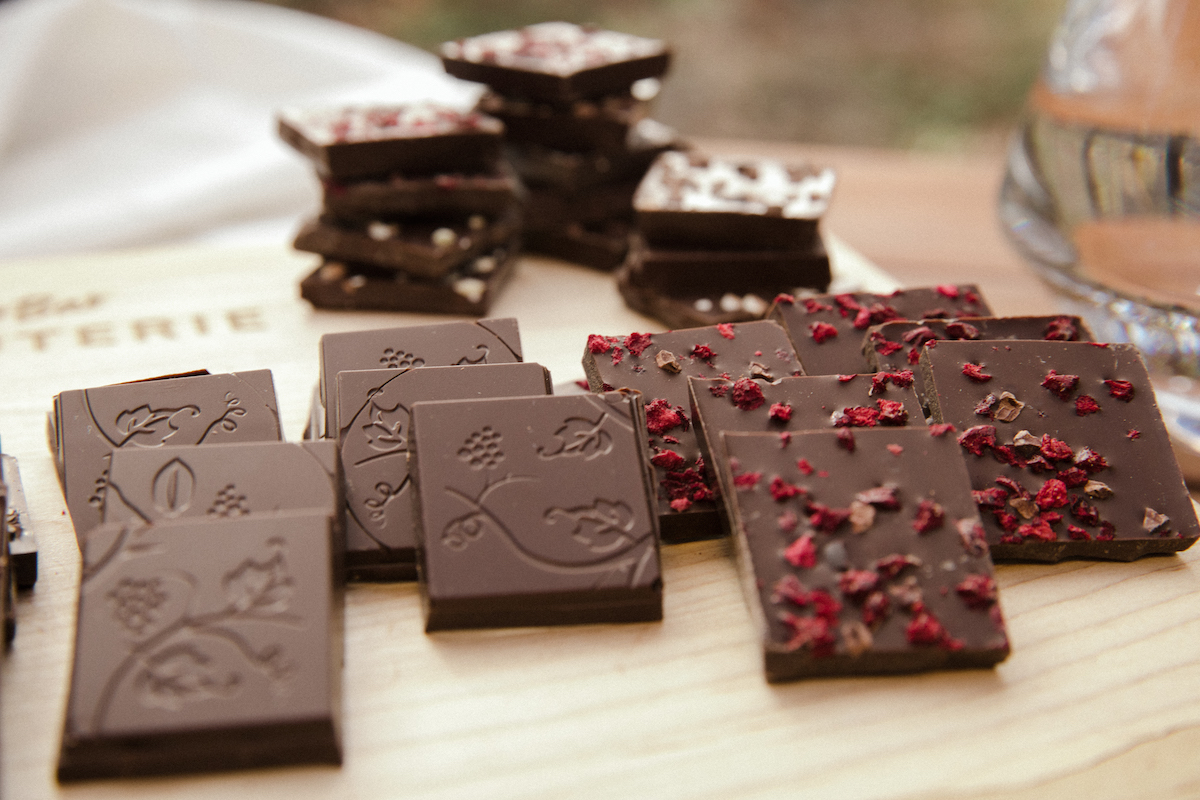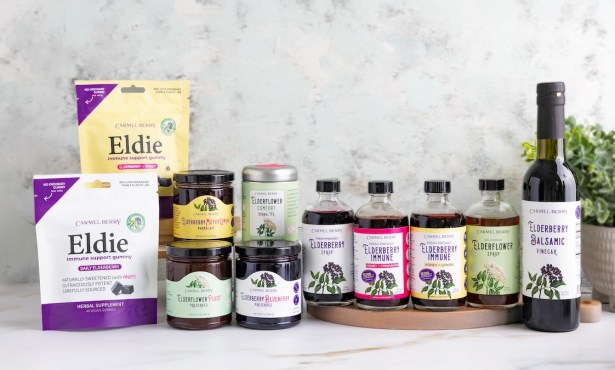At the end of every harvest, winemakers are left with tons and tons of grape pomace, the leftover skins, seeds, stems, and whatnot that remain after the juice that will become wine has been squeezed into tanks and barrels. For many wineries, especially the smaller ones, the gunk goes straight into the compost program, returning to the vineyard as mulch, while larger outfits are able to convert the leftovers into everything from more booze and cattle feed to grapeseed oil and tartaric acid.
But about 15 years ago, vintners Peggy Furth, who founded Chalk Hill Vineyards, and Barbara Banke, who owns Jackson Family Wines, figured there was a more creative use for the pomace. In 2009, they developed a process to turn their chardonnay skins into an ingredient called WellVine Chardonnay Marc, which they then added to chocolate, giving the sweets a boost of polyphenols, antioxidants, and slightly fruity flavor. The result is Vine to Bar, a range of chocolate-covered almonds and flavored bars that rely on chardonnay from places like Cambria Winery in the Santa Maria Valley, one of many Jackson Family properties.

“Traditional uses of pomace are certainly a great way to ensure that the leftover grapes from winemaking don’t end up in a landfill or otherwise completely wasted,” said Scott Forsberg, the chief operating officer of parent company WholeVine Products. But that leaves value on the table.
“Reducing a fully realized food back into fertilizer or a derivative product that creates additional waste streams doesn’t capture its true value,” said Forsberg. “To the greatest extent possible, that value should be realized to improve human health and food security. We call this a higher, better use of the grape.”
Why just chardonnay? Because, unlike red wine grapes, the skins are pressed before fermentation takes place. “This means that the grapes used in Wellvine are essentially fresh pressed fruit, made just hours after harvesting,” said Fosberg. “WellVine has all the goodness of fresh fruit but with 90 percent less sugar.” Chardonnay, he explained, also boasts a higher level of flavanols (the same antioxidants found in green tea and cocoa) and even more oligosaccharides (fibers that promote friendly gut bacteria) than is found in breast milk.
On the flavor front, the WellVine product becomes 15 percent of the resulting chocolate mix, and its natural sweetness decreases the bitterness of the cocoa. That means less sugar compared to similar chocolates. Toss in a bit of pink Himalayan salt and almonds, or tart cherry and cocoa nibs, and there’s plenty to satisfy both the palate and the planet in this upcycled dessert.
See vinetobar.com.







You must be logged in to post a comment.